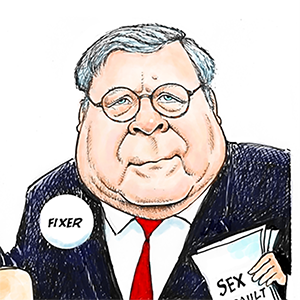How Russia employs ‘hard soft power’ to influence overseas media and sow dissent and fear among foreign populations
Published in News & Features
Public diplomacy – the art of rallying a foreign audience behind a nation’s interests – used to be about attracting support through charm, values and cultural exports. It is what political scientist Joseph Nye first referred to as “soft power.”
But our peer-reviewed study of Russian attempts to use foreign media as a diplomacy tool in the run-up to the invasion of Ukraine in 2022 highlights that the art has been adapted into what we call “hard soft power.”
Under this form of public diplomacy, governments mix in subtle threats to make the citizens of targeted countries feel unsafe. The overarching goals of such a strategy are to sow or exacerbate existing divisions, promote social chaos and extend the geopolitical reach of the responsible country.
Our study explored Russia’s use of hard soft power to win over Russian-speaking populations in the former Soviet countries of Ukraine and Georgia, while undermining democratic institutions and social trust in the United States and its NATO allies.
A content analysis of over 2,700 news stories from media sources from February to July 2021 showed that the Russian-language media based in Georgia and Ukraine consistently presented anti-Western narratives. The prominent framing included portraying NATO and the European Union as being existential threats to both countries.
These findings correspond with the Vladimir Putin-era expansion of Russia’s global news media networks, including RT, formerly Russia Today, and Sputnik, designed to influence populations and media outside of Russia. The results of the study also reflect the close ties that exist between the Kremlin and pro-Russian politicians or local business tycoons who run pro-Russian news media outlets.
Russia’s hard soft power could be considered as forming part of Russia’s “gray zone” tactics, which entail a broader range of coercive or manipulative activities, such as the issuing of false narratives and altering images.
It also complements Russia’s hard power – the use of military and economic measures to exert pressure on other countries.
Russian-speaking populations in former Soviet countries have been especially targeted by the Kremlin’s soft power campaigns in the post-Soviet years. This tactic aligns with Moscow’s goal of nurturing the allegiances of Russian diasporas and strengthening the idea of a “Russian World” or “Russkiy Mir.”
As countries bordering Russia, both Georgia and Ukraine have been targets of Moscow’s soft power diplomacy as well as its military aggression. During the period of our survey, Russia conducted a precursory buildup of its military forces in Crimea and around the eastern border of Ukraine, prior to the full invasion of February 2022.
Our study found that during this period, a narrative emerged among Russia-based media, local Ukrainian media and local Georgian media that emphasized Russia’s capacity to defy the military might of Western countries.
Our research illustrates how domestic media can be used as a tool in Russia’s propaganda playbook.
As the U.S. approaches the presidential election, the Kremlin and its proxies appear once again to be amplifying narratives around hot-button issues such as immigration, race and the Ukraine War. On Sept. 5, 2024, U.S. prosecutors indicted two Russian media executives over the secret funding of right-wing Americans to churn out videos to further Moscow interests in “amplifying U.S. domestic divisions in order to weaken U.S. opposition.”
While Russia has been the main country engaging in propaganda and disinformation campaigns, evidence exists that China and Iran have joined in such malign efforts.
Despite investments by countries such as Russia in hard soft power techniques, the question of whether these strategies have been successful in shaping the thoughts and behaviors of people needs further exploration.
Measuring the tangible outcomes of hard soft power initiatives is difficult, especially when it comes to social media. Still, our study as well as other research suggests that decentralized social media platforms may be less effective for foreign influence operations than more traditional media platforms.
Our research team plans to examine the hard soft power phenomenon within the context of other countries. Moreover, we plan to carry out a deep dive into patterns of hard soft power use and its influences on people in targeted countries through focus groups and experimental studies.
This article is republished from The Conversation, a nonprofit, independent news organization bringing you facts and trustworthy analysis to help you make sense of our complex world. It was written by: Catherine Luther, University of Tennessee and Brandon Prins, University of Tennessee
Read more:
Putin’s propaganda is rooted in Russian history – and that’s why it works
US and Russia engage in a digital battle for hearts and minds
Unregulated online political ads pose a threat to democracy
Catherine Luther receives funding from the Office of Naval Research through the Minerva Research Initiative (Grant: N000142012618).
Brandon Prins previously received funding from the Office of Naval Research through the Minerva Research Initiative (Grants: N000142112030 and N000141410050).








Comments